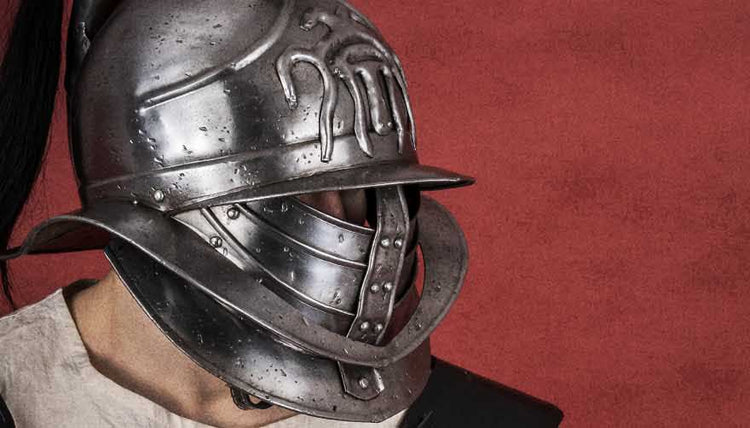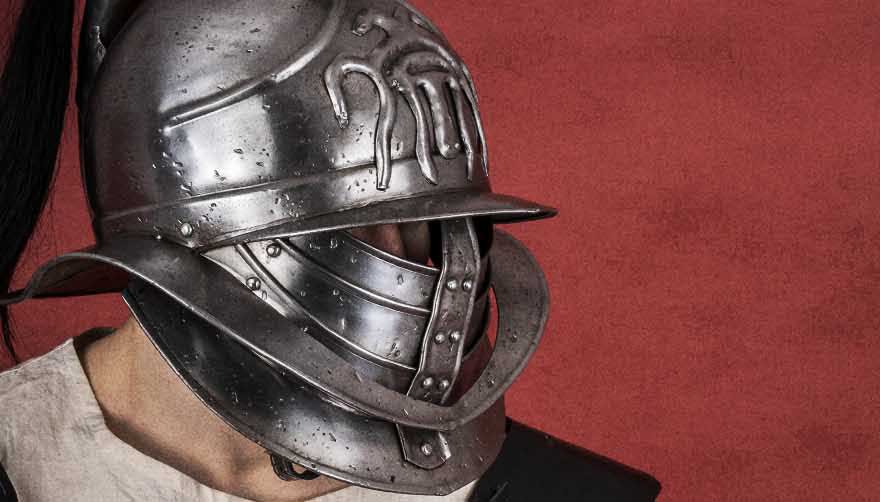Armour and helmets have been worn since before the Middle Ages to protect warriors during combat. Archaeological findings prove the first headgear which can be evaluated as helmets emerged from the time of the Sumerians around 3,000 BC. The first metal helmets were made of copper, with sporadic use of gold, from around the 14th century BC as well as helmets made of iron. The first uniform mass production of helmets can be attributed to the Romans, who thereby brought influences of different cultures together. Even simple Roman foot soldiers were equipped with uniform helmets from about the first century B.C. under Julius Caesar. When thinking of the Roman Empire, steeped in history, which in its heyday spanned three continents, the image of the Roman legionnaire springs to mind. Known above all is the imperial-Gallic Weisenau helmet type, named after the archaeological site of Mainz-Weisenau. The bronze helmet with an initially flat, later high round bell, characteristic cheek flaps, and an almost horizontal neck guard, is in sculpture and to this day in film and television the symbol of the Roman soldier’s gear. This is not always depicted completely correctly and appropriately for the time depicted. Equipped with a helmet bush, the helmet was also used to indicate different military ranks.


